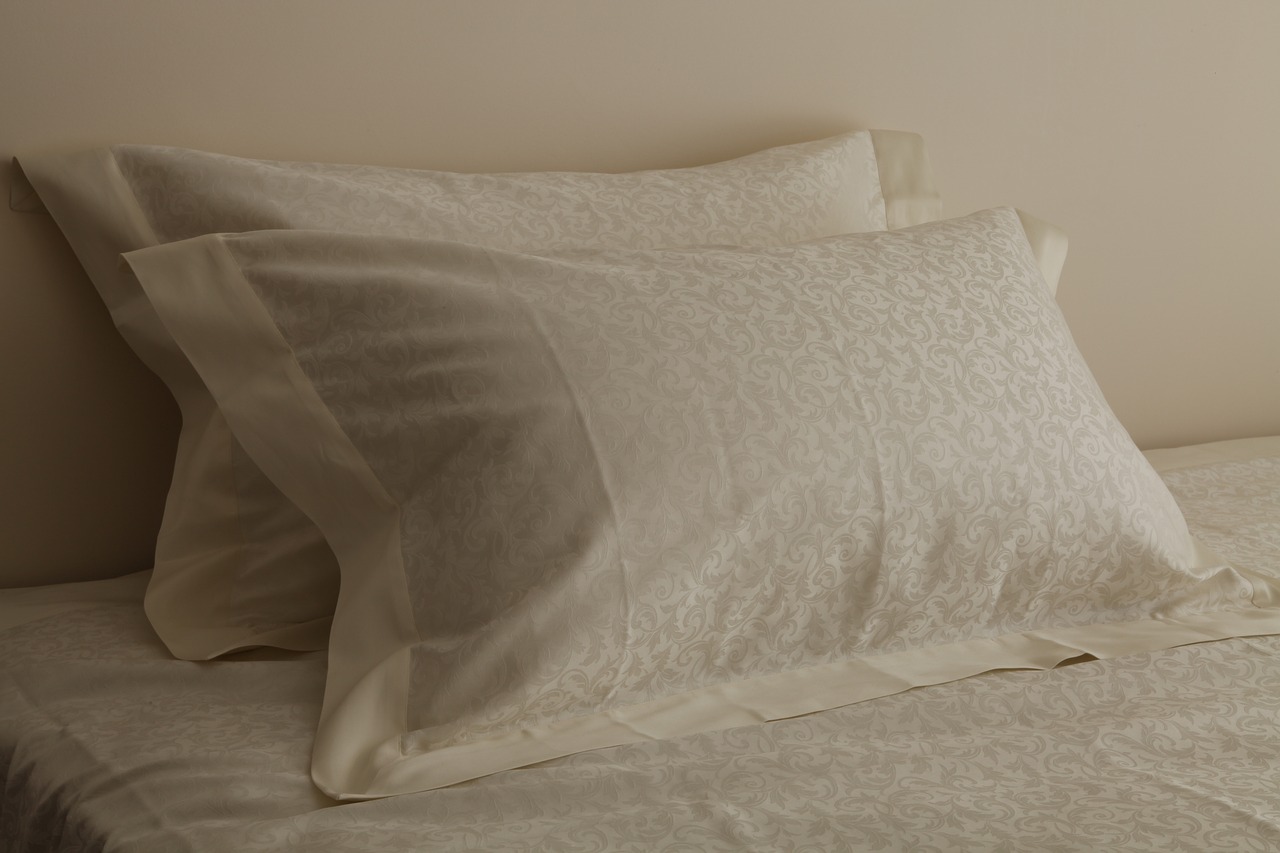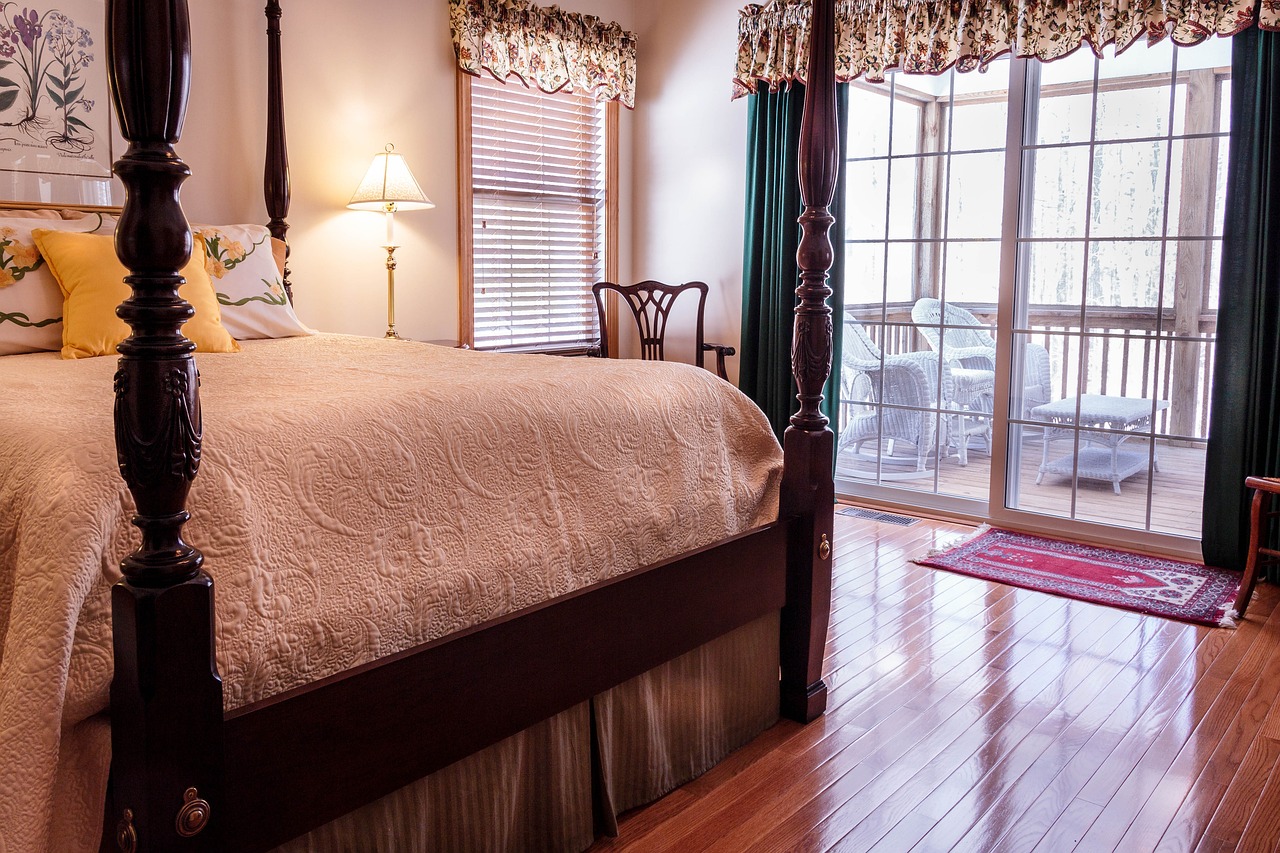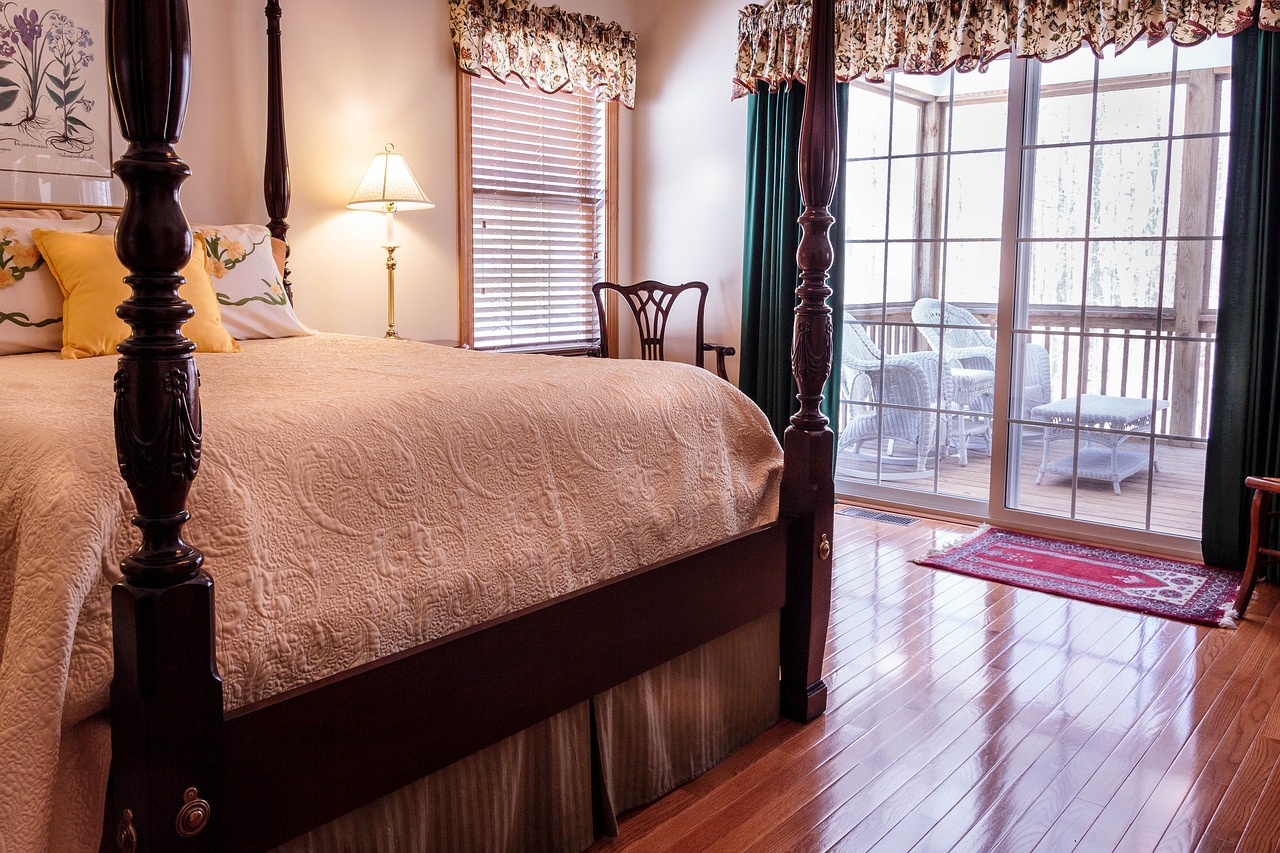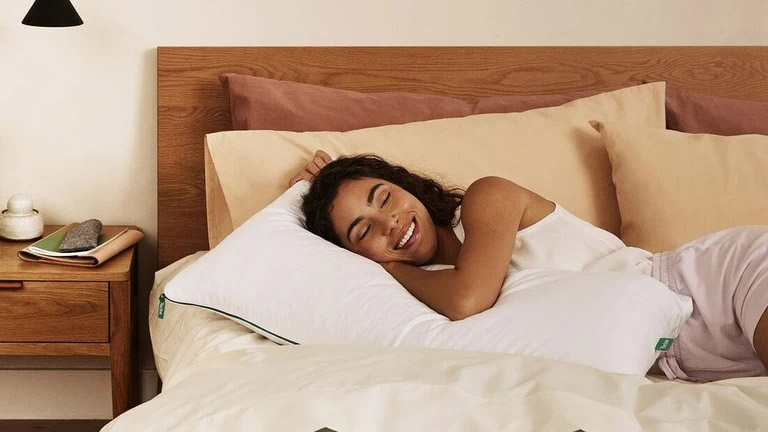Table of Contents
Your bedroom is more than just a place to sleep; it’s a sanctuary for relaxation, rest and rejuvenation. It plays a significant role in your overall well-being, especially when it comes to the quality of your sleep. In this article, we’ll explore the art of transforming your bedroom into a retreat that promotes better sleep and enhances your overall sense of well-being.
Indeed, your bedroom serves as a sanctuary for your physical and mental well-being, with a profound impact on your daily life and overall health. Let’s delve deeper into the ways you can transform your bedroom into a true haven of rest and rejuvenation:
1. The Power of Comfortable Bedding: The foundation of a restful retreat is your bed. Invest in a high-quality mattress that aligns with your preferred level of firmness and support. Complement it with soft, breathable bedding that promotes comfort and temperature regulation. Pillows, too, play a pivotal role; choose ones that provide adequate neck and head support to ensure a peaceful night’s sleep.
2. Mood-Enhancing Lighting: Lighting can set the mood in your bedroom. Opt for a combination of ambient, task and accent lighting to create a calming and versatile atmosphere. Dimmable lights allow you to adjust the brightness to suit different activities, from reading to winding down before sleep. Consider warm, soft-white bulbs to induce relaxation.
3. Tranquil Color Palette: Colors have a significant impact on mood. Choose a color palette that promotes serenity and relaxation. Soft, muted shades like blues, greens or neutral tones are known for their calming effects. Integrate these colors into your bedding, decor and wall paint to create a soothing atmosphere.
4. Clutter-Free Zone: Clutter can disrupt the peaceful ambiance of your bedroom. Keep the space tidy by adopting minimalist principles. Consider discreet storage solutions, like under-bed storage or built-in closets, to help maintain a clutter-free environment. A clean and organized space promotes a calm mind.
5. Personalized Decor: Infuse your personality into the decor while maintaining a sense of tranquility. Personalize your retreat with artwork, photos or decor items that hold sentimental value or evoke positive emotions. Choose pieces that contribute to the overall aesthetic and ambiance you desire.
6. Nature’s Touch: Incorporating elements of nature into your bedroom design can create a sense of harmony and well-being. Houseplants, nature-inspired artwork or natural materials like wood and stone can connect you with the calming influence of the outdoors.
7. Noise Control: A peaceful sleep environment often requires noise control. Consider using soft furnishings like curtains or rugs to absorb sound. White noise machines or soothing nature sounds can also help drown out disruptive noises, creating a tranquil auditory backdrop for rest.
8. Aromatherapy: Harness the power of scents to enhance your sleep experience. Aromatherapy diffusers or scented candles with calming fragrances like lavender, chamomile or eucalyptus can promote relaxation and improve sleep quality.
9. Comfortable Seating: If space allows, include a comfortable chair or cozy reading nook where you can unwind, read or meditate. These areas provide an additional retreat within your sanctuary.
10. Technology-Free Zone: Minimize the presence of electronic devices in your bedroom. The blue light emitted by screens can disrupt your sleep patterns. Create a technology-free zone to foster a calm and screen-free environment before bedtime.
Your bedroom should be a place of respite, where you can recharge, reflect and rejuvenate. By carefully curating the elements within your sleeping space, you can transform it into a retreat that not only promotes better sleep but also enhances your overall sense of well-being. This sanctuary sets the stage for a healthier and more balanced life, one night’s sleep at a time.
Additionally, you can find further information on this topic by visiting this page: Why Indoor Plants Make You Feel Better
Embrace Tranquil Colors
The color scheme of your bedroom can greatly impact your mood and sleep quality. Consider using soft, soothing colors like blues, greens or muted earth tones. These hues promote a sense of calm and relaxation, helping you unwind after a long day. Avoid bright, stimulating colors that can hinder relaxation.
The importance of selecting the right color scheme for your bedroom cannot be overstated, as it plays a profound role in influencing your mood, emotions and even your sleep quality. Let’s delve deeper into the significance of color choices and how soft, soothing colors can truly transform your bedroom into a haven of calm and relaxation:
1. Mood Elevation: Soft, soothing colors such as serene blues, tranquil greens or muted earth tones have a remarkable ability to elevate your mood. These colors are often associated with nature and evoke feelings of serenity and peace, helping you escape from the hustle and bustle of daily life.
2. Stress Reduction: When you step into a bedroom adorned with calming colors, you’re met with an instant reduction in stress and tension. The visual cues from these hues signal to your brain that it’s time to unwind, promoting relaxation and a sense of well-being.
3. Sleep Enhancement: Creating a bedroom environment conducive to sleep is essential for a restful night. Soft colors work harmoniously with your circadian rhythm, helping to regulate your sleep-wake cycle. This can lead to improved sleep quality and a more restorative night’s rest.
4. Visual Coziness: Soft colors create a visually cozy and inviting atmosphere. They make your bedroom feel like a warm cocoon, encouraging you to settle in and let go of the day’s worries.
5. Versatility: Soft, neutral tones are versatile and timeless. They serve as a perfect backdrop for various decor styles, from minimalist to traditional, allowing you to personalize your space without clashing with your chosen color palette.
6. Minimal Distraction: Bright and stimulating colors can be distracting in a bedroom, hindering relaxation and sleep. Soft hues, on the other hand, minimize visual distractions, allowing your mind to quiet down as you prepare for sleep.
7. Flexibility with Accents: Soft color schemes offer flexibility when it comes to incorporating accent colors. You can easily introduce pops of color through decor items like pillows, throws or artwork, allowing you to experiment with different color combinations while maintaining a soothing base.
8. Personal Connection: Soft colors often resonate with individuals on a personal level. Whether it’s the calming blue reminiscent of a favorite vacation spot or the earthy tones that connect you to nature, your bedroom’s color scheme can reflect your unique preferences and experiences.
9. Longevity: Soft, soothing colors have a timeless quality that doesn’t go out of style. This longevity ensures that your bedroom remains a peaceful sanctuary for years to come, offering consistency and comfort.
10. Balance and Harmony: Soft color palettes create a sense of balance and harmony within your bedroom. The colors work together seamlessly, promoting a cohesive and visually pleasing environment.
In essence, the choice of soft, soothing colors for your bedroom is a deliberate and highly effective means of fostering an environment that supports relaxation, tranquility and better sleep. By embracing these gentle hues, you transform your bedroom into a sanctuary where stress melts away and peaceful slumber becomes a nightly ritual.
Explore this link for a more extensive examination of the topic: Crafting a Serene Bedroom Oasis: Expert Tips for a Restful Sleep …

Invest in Quality Bedding
The centerpiece of your bedroom is undoubtedly your bed. Invest in high-quality bedding, including a comfortable mattress, soft sheets and a cozy duvet or comforter. Choose bedding materials that suit your personal preferences, whether it’s the cool, breathable feel of cotton or the warmth of flannel.
The centerpiece of your bedroom is undoubtedly your bed and it’s essential to invest in high-quality bedding to create a haven of comfort and relaxation. Here’s why making the right choices for your bedding is so crucial:
Quality Sleep: The quality of your sleep directly correlates with the quality of your bedding. A comfortable mattress provides the right support for your body, reducing aches and pains, while soft sheets and cozy blankets contribute to a restful night’s sleep. Investing in top-notch bedding materials can lead to better sleep quality and improved overall well-being.
Longevity: High-quality bedding materials tend to last longer. Durable mattresses retain their shape and support for years, while well-made sheets and comforters resist wear and tear, ensuring that your investment pays off in the long run. This longevity also reduces the frequency of replacements, saving you money over time.
Customized Comfort: Bedding choices allow for customization based on your personal preferences. Whether you prefer the crisp, cool feel of cotton, the luxurious softness of Egyptian cotton, the warmth of flannel or the silky smoothness of satin, you can tailor your bedding to match your ideal sleep experience.
Thermal Comfort: Different bedding materials offer varying levels of thermal comfort. Cotton and percale sheets are breathable and ideal for warm climates, while flannel or sateen sheets provide extra warmth during cold seasons. Choosing the right bedding for the season ensures that you stay comfortable year-round.
Aesthetic Appeal: Bedding plays a significant role in your bedroom’s aesthetics. The colors, patterns and textures you choose can complement your overall design theme and contribute to the room’s ambiance. It’s an opportunity to express your style and create a visually appealing space.
Health and Hygiene: High-quality bedding materials are often hypoallergenic and resistant to dust mites and allergens. This is especially important for individuals with allergies or respiratory sensitivities, as it can contribute to better indoor air quality and a healthier sleeping environment.
Ease of Maintenance: Well-made bedding is designed for easy maintenance. Many sheets and duvet covers are machine-washable, making it convenient to keep your bedding fresh and clean.
Investment in Well-Being: Your bed is more than just a piece of furniture; it’s an investment in your well-being. Quality bedding supports your physical and mental health by providing the comfort and rest you need to face each day refreshed and rejuvenated.
Sustainable Choices: Many high-quality bedding brands prioritize sustainability and eco-friendly practices. Choosing bedding made from organic materials or from companies with responsible manufacturing processes can align with your values and contribute to a more sustainable lifestyle.
In conclusion, investing in high-quality bedding is a decision that goes beyond mere comfort; it’s an investment in your overall quality of life. The right bedding materials can enhance your sleep, promote better health and elevate the aesthetics of your bedroom. Whether you prioritize comfort, durability, aesthetics or sustainability, making thoughtful choices for your bedding is an essential step toward creating a cozy and inviting sleep sanctuary.
If you’d like to dive deeper into this subject, there’s more to discover on this page: Interior Design for a Better Sleep: Tips and Tricks to Create a …

Create a Sleep-Conducive Environment
Darkness and quietness are essential for quality sleep. Install blackout curtains or shades to block out external light and consider using earplugs or a white noise machine if noise is a concern. These elements can create a serene sleep environment that fosters restful sleep.
Creating the right sleep environment is essential for achieving restorative and quality sleep. Expanding on the importance of darkness and quietness:
1. The Power of Darkness:
Melatonin Production: Darkness signals to your body that it’s time to produce melatonin, the hormone that regulates sleep. Exposure to artificial or natural light during the night can disrupt this process and make it harder to fall asleep and stay asleep.
Block External Distractions: Blackout curtains or shades not only keep out light but also shield you from external distractions. Whether it’s streetlights, passing cars or early morning sunlight, blocking these interruptions can significantly improve your sleep quality.
Shift Work and Daytime Sleep: For individuals who work night shifts or have irregular schedules, blackout curtains are especially valuable. They enable you to create a nighttime environment during the day, allowing for restful sleep even when the sun is shining.
2. Silence for Serenity:
Reducing Noise Pollution: Noise can be a major disruptor of sleep. Even subtle noises like traffic, neighbors or household sounds can interfere with your ability to fall asleep and stay asleep. Using earplugs or a white noise machine can mitigate the impact of these disturbances.
White Noise Benefits: White noise is a consistent, unobtrusive sound that can help mask disruptive noises and create a soothing sleep environment. It works by drowning out sudden changes in noise levels that might otherwise wake you up. White noise machines offer various sound options, allowing you to choose the one that best suits your preferences.
Personalized Soundscapes: Some people find nature sounds, gentle rain or ocean waves more relaxing than traditional white noise. Modern sound machines offer a variety of soothing soundscapes, allowing you to tailor your sleep environment to your liking.
3. Complementary Strategies:
Sleep Masks: In addition to blackout curtains, consider using a comfortable sleep mask. Sleep masks are particularly useful for individuals who may not have control over their sleep environment, such as travelers or shift workers. They provide a portable, instant solution for blocking out light.
Noise-Canceling Headphones: For those who find earplugs uncomfortable, noise-canceling headphones can be an effective alternative. They actively reduce external noise, creating a peaceful auditory environment.
Room Layout and Insulation: If external noise remains a concern, consider room layout and insulation improvements. Rearranging furniture or adding soundproofing materials to walls and ceilings can help reduce noise infiltration.
4. Consistency Matters:
Routine and Sleep Hygiene: Consistency is key when it comes to sleep. Establishing a regular sleep routine and practicing good sleep hygiene are foundational for quality sleep. The use of blackout curtains and noise control measures complements these efforts by creating a conducive sleep environment.
Personal Preferences: Remember that everyone’s ideal sleep environment may vary. Some individuals may prefer complete darkness and silence, while others find comfort in gentle background noise. It’s essential to tailor your sleep environment to your specific needs and preferences.
By prioritizing darkness and quietness in your sleep environment, you can significantly enhance your sleep quality. These elements work together to create a serene and uninterrupted atmosphere that fosters deep, restful sleep, ultimately contributing to your overall well-being and daily vitality.
Looking for more insights? You’ll find them right here in our extended coverage: How To Sleep Better: 15 Science-Backed Tips

Declutter and Organize
A clutter-free bedroom can contribute significantly to your sense of calm and well-being. Declutter your space regularly, keeping only essential items in your bedroom. Consider incorporating storage solutions like under-bed drawers or wall-mounted shelves to keep things organized and out of sight.
Creating a clutter-free bedroom isn’t just about aesthetics; it’s about fostering a serene and stress-free environment that supports your overall well-being. Expanding on the importance of decluttering and effective storage solutions, here’s how they can positively impact your sense of calm and tranquility:
Enhanced Mental Clarity: A clutter-free bedroom reduces visual noise and distractions, allowing your mind to relax and focus on what truly matters. This mental clarity can lead to improved concentration, better decision-making and reduced feelings of overwhelm.
Stress Reduction: Clutter can create a sense of chaos and disorganization, which can contribute to stress and anxiety. By decluttering your bedroom, you create a peaceful oasis where you can unwind, promoting a sense of relaxation and stress relief.
Improved Sleep Quality: A clutter-free and organized bedroom can have a direct impact on your sleep quality. Removing excess items and distractions from your sleep environment can lead to more restful and rejuvenating sleep, ultimately improving your overall well-being.
Efficient Morning Routine: Starting your day in an organized and clutter-free bedroom can set a positive tone for the day ahead. With everything in its place, your morning routine becomes more efficient and less stressful.
Positive Mood: A tidy and organized bedroom can uplift your mood and create a positive atmosphere. It’s easier to find joy and contentment in a space that is free from clutter and chaos.
Enhanced Productivity: If your bedroom serves as a workspace or study area, a clutter-free environment can boost productivity. An organized space allows you to focus on tasks without the distraction of cluttered surroundings.
Personal Space: Your bedroom is a personal sanctuary and keeping it clutter-free reinforces the idea that it’s a space exclusively for relaxation, intimacy and self-care. This distinction helps you mentally disconnect from the demands of the outside world.
Sustainable Living: Decluttering often involves reassessing the value and purpose of your belongings. This process can lead to more conscious consumption and a commitment to living a more sustainable and eco-friendly lifestyle.
Easy Maintenance: Once you’ve decluttered and established effective storage solutions, maintaining a clutter-free bedroom becomes simpler. It requires less effort and time, allowing you to focus on activities that bring you joy and relaxation.
Positive Habits: Decluttering can cultivate positive habits in other areas of your life. The discipline of regularly evaluating and letting go of unnecessary possessions can extend to mindful decision-making in other aspects of your daily routine.
Incorporating storage solutions like under-bed drawers or wall-mounted shelves enhances your ability to keep your bedroom organized and clutter-free. These solutions not only provide a designated place for items but also keep them out of sight, contributing to a cleaner and calmer visual environment.
Ultimately, a clutter-free bedroom is a sanctuary that supports your mental and emotional well-being. By regularly decluttering and optimizing your storage, you create a space where you can find solace, relaxation and a deep sense of calm, promoting a higher quality of life and overall happiness.
Looking for more insights? You’ll find them right here in our extended coverage: How to Have a Sleep Retreat at Home: 5 Tips from Experts | Saatva

Personalize Your Retreat
Add personal touches to your bedroom to make it truly your own retreat. Incorporate artwork, photographs or decor items that resonate with you. These personal touches create a sense of comfort and belonging in your space.
Adding personal touches to your bedroom is the key to transforming it into a truly unique and cherished retreat. Your personal space should be a reflection of your personality, tastes and memories, creating an environment where you feel completely at ease and inspired. Here are some ideas on how to infuse your bedroom with your own personal touch:
1. Artwork and Photographs: Hang artwork or photographs that hold special meaning to you. Whether it’s a painting that speaks to your soul, a collection of travel photos that evoke fond memories or family portraits that warm your heart, these visual elements can turn your bedroom into a gallery of your life’s journey.
2. Decor Items: Incorporate decor items that reflect your interests and passions. If you’re a book lover, arrange your favorite books on shelves or create a cozy reading nook. If you enjoy nature, bring in potted plants, terrariums or botanical prints. These decor pieces not only add character but also create a comforting and inviting atmosphere.
3. Personalized Bedding: Customize your bedding with patterns, colors or monograms that resonate with you. It’s an easy and impactful way to make your bed a focal point in the room while infusing your personality into the space.
4. DIY Projects: Consider DIY projects that allow you to personalize your bedroom further. Create your own artwork, craft unique shelving units or design custom-made furniture. These hands-on projects not only add a personal touch but also give you a sense of accomplishment and pride in your space.
5. Sentimental Keepsakes: Display sentimental keepsakes or heirlooms that have been passed down through generations. These items carry with them a sense of history and tradition, making your bedroom feel like a place of connection to your family and heritage.
6. Inspirational Quotes: Incorporate inspirational quotes or affirmations that motivate and uplift you. You can use wall decals, framed prints or even a chalkboard where you can change the message regularly. Surrounding yourself with positive words can create a nurturing and empowering atmosphere.
7. Textiles and Fabrics: Choose textiles and fabrics for your bedding, curtains and cushions that reflect your preferred color palette and textures. Soft, plush fabrics or crisp, clean lines can evoke different moods and sensations, so select the ones that align with your comfort and style preferences.
Personalizing your bedroom is an ongoing journey that allows you to continually evolve and refine the space as your tastes and experiences change. These personal touches not only create a sense of comfort and belonging but also make your bedroom a true reflection of your unique identity and the things that matter most to you. It becomes a sanctuary that welcomes you with open arms at the end of each day, nurturing your spirit and fostering a deep sense of connection.
If you’d like to dive deeper into this subject, there’s more to discover on this page: Bedroom Retreat: Your Best Sleep & More

Minimize Technology
Remove or minimize electronic devices from your bedroom, especially those with bright screens. The blue light emitted from screens can disrupt your circadian rhythm and hinder sleep. Reserve your bedroom for relaxation and sleep, not work or screen time.
Creating a serene and sleep-friendly bedroom environment is crucial for ensuring restorative sleep and overall well-being. Here’s an extended idea on the importance of minimizing electronic devices in your bedroom:
Transform Your Bedroom into a Sanctuary for Restful Sleep
Modern life is often dominated by screens, from smartphones to tablets and televisions. However, when it comes to your bedroom, it’s essential to create a tranquil oasis conducive to restful sleep. Here are some reasons to remove or minimize electronic devices from your sleeping space:
Circadian Rhythm Harmony: The blue light emitted by electronic screens, especially in the evening, can confuse your body’s natural circadian rhythm. This disruption in your sleep-wake cycle can make it difficult to fall asleep and wake up feeling refreshed. By removing screens, you help your body sync with its natural biological clock, promoting healthier sleep patterns.
Reduced Sleep Disturbances: Notifications, alerts and the temptation to check emails or social media can be constant distractions when electronic devices are present in the bedroom. Minimizing these distractions ensures that you enjoy uninterrupted, high-quality sleep.
Enhanced Relaxation: A bedroom should be a place of relaxation and tranquility. When you eliminate screens, you create a calming atmosphere that signals to your brain that it’s time to wind down. This can lead to improved relaxation before sleep, helping you fall asleep faster and experience deeper sleep cycles.
Improved Sleep Quality: The quality of your sleep matters as much as its duration. By removing screens, you reduce the chances of experiencing sleep interruptions, such as waking up due to incoming messages or the glow of screens. As a result, you’re more likely to enjoy restorative, deep sleep, which is essential for physical and mental well-being.
Better Sleep Hygiene: Establishing a screen-free bedroom is a fundamental aspect of good sleep hygiene. It reinforces the idea that your bedroom is primarily for sleep and relaxation, not for work or entertainment. This separation of spaces and activities reinforces healthy sleep habits.
Enhanced Mental Health: Excessive screen time, particularly before bedtime, has been linked to increased stress, anxiety and depressive symptoms. A screen-free bedroom can contribute to improved mental health by providing a sanctuary where you can escape the constant demands of digital life.
Strengthened Relationships: Removing screens from the bedroom can also improve interpersonal relationships. Instead of scrolling through social media or watching TV, you might engage in more meaningful conversations with your partner, strengthening your emotional connection.
To create a screen-free sanctuary in your bedroom, consider establishing a charging station in another room for your electronic devices. Invest in an analog alarm clock to replace your smartphone as an alarm. Create a pre-sleep routine that involves calming activities such as reading a book, meditating or practicing gentle stretching exercises.
By embracing these changes and prioritizing the removal or reduction of electronic devices in your bedroom, you can take significant steps toward improving your sleep quality and overall well-being, making your bedroom a true haven for rest and rejuvenation.
If you’d like to dive deeper into this subject, there’s more to discover on this page: Interior Design for a Better Sleep: Tips and Tricks to Create a …

Incorporate Relaxation Zones
Create designated relaxation zones within your bedroom. A cozy reading nook with a comfortable chair and soft lighting is ideal for unwinding before bedtime. This area can serve as a place for quiet reflection or reading, helping you transition into a restful state of mind.
Designing dedicated relaxation zones within your bedroom is a thoughtful way to enhance your overall well-being and create a peaceful haven. Let’s delve further into the concept of designated relaxation zones and explore additional ideas for optimizing your bedroom’s tranquility:
Meditation and Mindfulness Corner: Consider setting up a meditation or mindfulness corner in your bedroom. Place a comfortable cushion or yoga mat on the floor, along with a small altar or table for candles, incense or inspirational objects. This serene space can be where you start or end your day with mindfulness practices that promote inner calm and self-awareness.
Aromatherapy Oasis: Infuse your relaxation zone with the soothing scents of aromatherapy. Use essential oil diffusers or scented candles to create a serene atmosphere. Scents like lavender, chamomile and eucalyptus can promote relaxation and stress relief.
Soundscapes and Music: Incorporate soundscapes, soft music or nature sounds into your relaxation area. Ambient sounds can create a serene backdrop for reading, meditation or simply unwinding. Invest in a quality Bluetooth speaker or wireless headphones for an immersive audio experience.
Texture and Comfort: Enhance the comfort of your relaxation zone with plush cushions, throw blankets and soft rugs. These tactile elements create a cozy and inviting space where you can fully relax and unwind.
Natural Elements: Bring elements of nature into your relaxation area. Potted plants, a small indoor fountain or a wall-mounted plant shelf can add a touch of greenery and tranquility to your space.
Adjustable Lighting: Install adjustable lighting fixtures that allow you to control the brightness and warmth of the room. Dimmable overhead lights or smart bulbs can create a soothing ambiance that adapts to your relaxation needs.
Book Nook or Library: If you’re an avid reader, consider transforming your relaxation zone into a mini-library. Arrange your favorite books on shelves or a nearby bookcase for easy access to literary escapes that transport you to different worlds.
Tech-Free Retreat: Create a tech-free zone in your relaxation area. Leave your digital devices outside or in another part of the room to minimize distractions and fully immerse yourself in your chosen relaxation activity.
Personal Retreat Rituals: Develop personalized relaxation rituals that help signal the transition from daily activities to relaxation time. This could be as simple as brewing a cup of herbal tea or engaging in a brief gratitude journaling session.
Visualization and Vision Boards: Use your relaxation zone as a space for visualizing your goals and dreams. Create a vision board or display inspirational quotes and images that motivate and inspire you.
Declutter Regularly: To maintain a serene and inviting relaxation zone, declutter and tidy the space regularly. Keep it free from items that may distract from its primary purpose.
Mindful Breathing: Dedicate a few minutes in your relaxation zone to practice mindful breathing exercises. Deep, slow breaths can calm your nervous system and promote relaxation.
Customization and Personalization: Tailor your relaxation zone to reflect your personal tastes and interests. Incorporate colors, textures and decor items that resonate with you and evoke a sense of calm.
By creating designated relaxation zones within your bedroom, you not only enhance your ability to unwind and de-stress but also carve out a space where you can reconnect with yourself, foster mindfulness and embrace the serenity of your own personal retreat. These intentional spaces empower you to prioritize self-care and mental well-being in your daily routine.
Looking for more insights? You’ll find them right here in our extended coverage: What Is a Sleep Retreat – A Sanctuary for Healing

Mindful Lighting
Install adjustable lighting in your bedroom. Dimmable fixtures or lamps with warm, soft lighting can set the mood for relaxation. Consider using bedside lamps with dimmer switches to create a calming ambiance before bedtime.
Installing adjustable lighting in your bedroom is a brilliant step toward creating a versatile and soothing atmosphere that adapts to your varying needs and moods. Let’s explore the idea further and discover how adjustable lighting can enhance your bedroom in more ways than one:
1. Tailored Ambiance:
Adjustable lighting allows you to customize the ambiance in your bedroom to suit different occasions. Whether you’re winding down after a long day, reading a book or preparing for a romantic evening, having control over the intensity and warmth of your lighting is essential. Dimmable fixtures and lamps provide the flexibility to achieve the desired mood effortlessly.
2. Relaxation and Sleep:
Dimmable lighting, particularly with warm and soft hues, plays a crucial role in signaling to your body that it’s time to unwind and prepare for sleep. Lowering the lights in the evening mimics the natural progression toward nighttime, encouraging the release of melatonin, the hormone that regulates sleep. This can help you relax and achieve better sleep quality.
3. Task Lighting:
Adjustable lighting is not just about creating a soothing ambiance; it’s also practical for tasks like reading or working. Bedside lamps with dimmer switches or adjustable wall sconces provide focused illumination when needed, allowing you to read or work without straining your eyes.
4. Energy Savings:
Dimmable lighting systems often come with energy-saving benefits. When you don’t need bright, full illumination, you can reduce the intensity of the lights, thus conserving energy and lowering your electricity bills. This eco-friendly approach aligns with sustainable living practices.
5. Design Flexibility:
Adjustable lighting fixtures can be integrated seamlessly into your bedroom’s design. Whether you prefer sleek, modern fixtures or vintage-inspired pieces, you can find dimmable options that complement your style and decor.
6. Artistic Expression:
Adjustable lighting fixtures can serve as artistic elements in your bedroom. Pendant lights with adjustable heights, for example, can become eye-catching focal points that add a touch of drama and flair to your space. Experiment with different lighting styles to infuse your personality into the room.
7. Setting the Mood:
Beyond relaxation and sleep, adjustable lighting is perfect for setting the mood for special occasions. Whether you’re having a romantic dinner in your bedroom or hosting an intimate gathering, the ability to dim or brighten the lights helps create the desired atmosphere.
8. Smart Lighting Systems:
For ultimate convenience, consider incorporating smart lighting systems into your bedroom. These systems allow you to control your lights remotely via a smartphone app or voice commands. You can program lighting scenes for different times of the day and even adjust the color temperature to align with your circadian rhythms.
In conclusion, adjustable lighting is a versatile and indispensable tool in bedroom design. It enhances relaxation, promotes better sleep, supports various activities and adds an artistic dimension to your space. By incorporating dimmable fixtures and lamps with warm, soft lighting, you can transform your bedroom into a haven of tranquility and adapt it to your ever-changing needs and desires. It’s a simple yet effective way to elevate the overall ambiance and functionality of your personal retreat.
To delve further into this matter, we encourage you to check out the additional resources provided here: How to Have a Sleep Retreat at Home: 5 Tips from Experts | Saatva

Scented Serenity
Aromatherapy can enhance your bedroom retreat. Use essential oils or scented candles with calming scents like lavender or chamomile to promote relaxation and better sleep. A subtle and soothing fragrance can create a tranquil atmosphere.
Aromatherapy is a delightful and effective way to elevate your bedroom retreat, turning it into a haven of tranquility and relaxation. Here’s how you can further explore the benefits of aromatherapy for a peaceful and restful sleep environment:
Essential Oil Diffusers: Invest in an essential oil diffuser to disperse the soothing scents of essential oils throughout your bedroom. Choose oils known for their calming properties, such as lavender, chamomile, bergamot or cedarwood. A diffuser not only adds a gentle aroma but also enhances the ambiance with soft, color-changing LED lights.
Customized Blends: Experiment with creating your own essential oil blends to suit your personal preferences and needs. For example, combining lavender and cedarwood can promote relaxation, while a blend of eucalyptus and peppermint can help with congestion and clarity. Adjust the ratios to find the perfect scent that resonates with you.
Scented Candles: Scented candles can be both visually appealing and aromatherapeutically beneficial. Opt for high-quality candles with natural fragrances. Place them strategically around your bedroom to create pockets of relaxation. Be sure to follow safety precautions when using candles, such as never leaving them unattended.
Pillow Sprays: Consider using pillow sprays infused with calming scents. A light mist of lavender or chamomile on your pillows and bedding can set the stage for a peaceful night’s sleep. You can find commercial pillow sprays or make your own using essential oils and water.
Bedtime Routine: Incorporate aromatherapy into your bedtime routine. A few drops of your chosen essential oil on a tissue tucked under your pillow or a relaxing bath with essential oil-infused bath salts can prepare your mind and body for sleep.
Yoga and Meditation: If you practice yoga or meditation in your bedroom, use aromatherapy to enhance these sessions. Essential oils like frankincense, sandalwood or patchouli can deepen your sense of tranquility and mindfulness during these practices.
Calming Scents for Wakefulness: Aromatherapy is not limited to bedtime. Certain scents like citrus (lemon, orange) or peppermint can help boost alertness and energy. Use these scents in the morning to start your day feeling refreshed and invigorated.
Aromatherapy in Design: Incorporate aromatherapy into your bedroom decor. Use diffuser jewelry or aroma stones with essential oils to add a touch of fragrance to your room’s design elements. These subtle additions can enhance the overall atmosphere.
Mindful Breathing: As you enjoy the aromas in your bedroom, practice mindful breathing exercises. Inhale deeply and exhale slowly, allowing the calming scents to guide your breath. This mindfulness practice can further deepen your sense of peace and relaxation.
Consistency: Make aromatherapy a consistent part of your bedtime routine. Over time, your mind and body will associate these soothing scents with sleep, helping you fall asleep faster and enjoy more restful nights.
Aromatherapy offers a sensory experience that can transform your bedroom into a serene and rejuvenating space. By harnessing the power of calming scents, you not only enhance the ambiance but also nurture your overall well-being, promoting a peaceful mind and a more restful sleep every night.
To delve further into this matter, we encourage you to check out the additional resources provided here: Transform Your Bedroom into a Sanctuary for Sensuality & Serenity …

Reflect on Your Retreat
Spend a few moments each day in your bedroom retreat for mindfulness and reflection. This practice can help you unwind, clear your mind and improve your overall well-being. Whether through meditation, journaling or simply enjoying the peaceful ambiance, these moments contribute to your mental and emotional health.
Taking a few moments each day to retreat to your bedroom for mindfulness and reflection can be a powerful and transformative practice. It’s not just a moment of respite; it’s an investment in your mental and emotional well-being that yields remarkable benefits over time. Here’s how this daily ritual can enrich your life:
1. Stress Reduction: In our fast-paced world, stress can accumulate rapidly. Your bedroom retreat becomes a sanctuary of calm amidst the chaos. Whether through meditation, deep breathing exercises or simply closing your eyes and embracing the stillness, this daily respite helps release the tension and anxiety that can build up throughout the day.
2. Clarity of Thought: A cluttered mind can lead to scattered thoughts and reduced productivity. The quiet moments in your bedroom provide a space to declutter your mind. By journaling your thoughts, goals or gratitude, you can gain clarity and focus, helping you make more intentional choices and decisions.
3. Emotional Release: Sometimes, emotions can become overwhelming. Your bedroom retreat offers a safe space to process and release these emotions. Whether you need to shed tears, express joy or simply sit with your feelings, this daily practice encourages emotional health and self-acceptance.
4. Improved Sleep: Mindfulness and reflection in your bedroom can significantly improve the quality of your sleep. By letting go of the day’s worries and concerns before bedtime, you create a peaceful transition to sleep, resulting in a more restful night’s rest.
5. Enhanced Self-Understanding: Regular self-reflection fosters a deeper understanding of yourself, your values and your goals. It encourages introspection and self-awareness, allowing you to align your life choices with your authentic self.
6. Mind-Body Connection: Your bedroom retreat provides an opportunity to strengthen the mind-body connection. Through relaxation techniques like progressive muscle relaxation or gentle yoga, you can improve your physical and mental well-being, promoting holistic health.
7. Gratitude and Contentment: Focusing on gratitude within your bedroom sanctuary can shift your perspective toward contentment and appreciation. Expressing gratitude for the present moment and the blessings in your life enhances your overall happiness.
8. Personal Growth: These daily moments of mindfulness and reflection contribute to your personal growth journey. As you consistently invest in self-care and self-awareness, you nurture personal development and self-improvement.
9. Enhanced Relationships: The inner peace cultivated in your bedroom retreat can positively affect your interactions with others. When you approach relationships with a calm and centered mind, you’re more capable of empathy, patience and understanding.
10. Lifelong Well-Being: Ultimately, these daily rituals form the foundation of lifelong well-being. By consistently nurturing your mental and emotional health in your bedroom retreat, you create a reservoir of resilience that equips you to navigate life’s challenges with grace and equanimity.
In summary, the simple act of dedicating a few moments each day to your bedroom retreat for mindfulness and reflection can ripple through every aspect of your life. It’s a profound investment in your well-being, offering a haven of calm, clarity and personal growth. So, take those moments to pause, breathe and reconnect with yourself in your bedroom sanctuary and watch as your overall well-being flourishes.
Should you desire more in-depth information, it’s available for your perusal on this page: 5 Ways to Create a Bedroom Retreat

Creating a bedroom retreat tailored to your preferences and needs can significantly enhance your sleep quality and overall well-being. It’s a space where you can unwind, rejuvenate and find solace in the midst of life’s demands. By embracing tranquility, decluttering and making mindful choices in design and decor, your bedroom can truly become a haven for better sleep and a heightened sense of well-being.
Creating a bedroom retreat tailored to your preferences and needs can significantly enhance your sleep quality and overall well-being. It’s a space where you can unwind, rejuvenate and find solace in the midst of life’s demands. By embracing tranquility, decluttering and making mindful choices in design and decor, your bedroom can truly become a haven for better sleep and a heightened sense of well-being.
Personalized Comfort: Tailor your bedding to your exact comfort preferences. Invest in a high-quality mattress and pillows that provide the right level of support for your body. Whether you prefer a plush cloud-like feel or a firmer foundation, prioritize your comfort above all else.
Mindful Color Choices: The colors you choose for your bedroom can have a profound impact on your mood and sleep quality. Soft, calming colors like blues, greens and muted neutrals promote relaxation and tranquility. Consider how different hues make you feel and select a palette that resonates with your sense of peace.
Light Control: Implement effective light control measures to regulate the amount of natural and artificial light in your bedroom. Blackout curtains, shades or blinds can block out intrusive streetlights or early morning sun, ensuring a restful sleep environment.
Digital Detox: Create a technology-free zone in your bedroom. Remove or turn off electronic devices like televisions, smartphones and laptops at least an hour before bedtime. The blue light emitted from screens can interfere with your body’s production of melatonin, making it harder to fall asleep.
Declutter and Organize: A clutter-free bedroom promotes a clutter-free mind. Regularly declutter your space by organizing and finding appropriate storage solutions for items that tend to accumulate. A tidy room helps reduce visual distractions and promotes a sense of calm.
Plants and Fresh Air: Incorporate indoor plants that purify the air and add a touch of nature to your room. Open windows during the day to let in fresh air and consider adding an air purifier to improve air quality and help you breathe easier.
Aromatherapy: Utilize the power of aromatherapy to create a soothing atmosphere. Essential oils like lavender, chamomile and eucalyptus can be diffused in your bedroom to induce relaxation and promote better sleep.
Personal Retreat Space: Designate a corner or nook within your bedroom as a personal retreat space. Whether it’s a comfortable reading corner, a meditation area or a cozy spot for journaling, having a dedicated space for mindfulness and relaxation can enhance your overall well-being.
Artwork and Decor: Choose artwork and decor that resonate with your sense of peace and serenity. Whether it’s calming nature scenes, abstract art or personal photographs that hold positive memories, these elements can infuse your space with a sense of tranquility.
Routine and Ritual: Establish bedtime routines and rituals that signal to your body that it’s time to unwind. This can include activities like reading a book, practicing gentle stretches or enjoying a soothing cup of herbal tea.
Quality Bedding: Invest in high-quality, natural bedding materials. Consider options like organic cotton sheets, wool blankets or silk pillowcases for a luxurious and comfortable sleep experience.
Regular Maintenance: Maintain your bedroom regularly to keep it a peaceful sanctuary. Dust, vacuum and change your bedding regularly to ensure a clean and fresh environment.
By nurturing your bedroom as a sacred space for rest and rejuvenation, you can create an environment that supports your physical and emotional well-being. A mindful approach to your bedroom’s design and functionality can have a profound impact on your sleep quality, stress levels and overall sense of balance in life. It’s a powerful way to prioritize self-care and enhance your daily life.
For additional details, consider exploring the related content available here The Hygge Bedroom: Transform Your Bedroom into a Cozy Retreat
More links
Don’t stop here; you can continue your exploration by following this link for more details: How to Have a Sleep Retreat at Home: 5 Tips from Experts | Saatva
